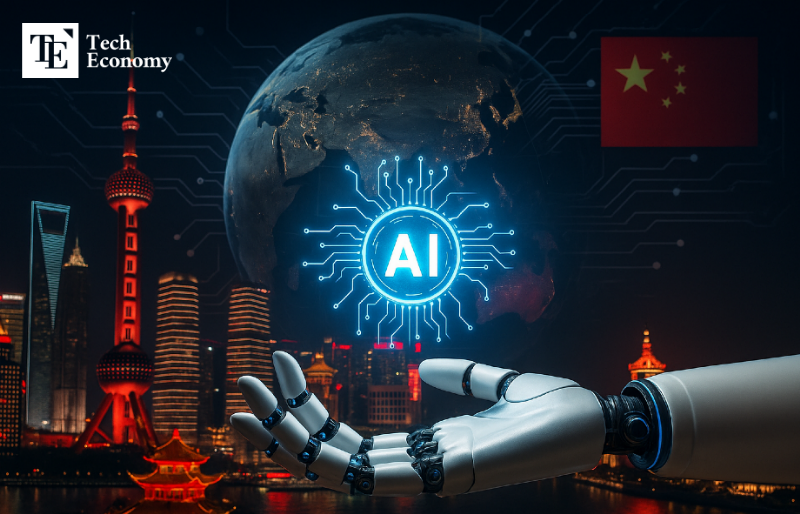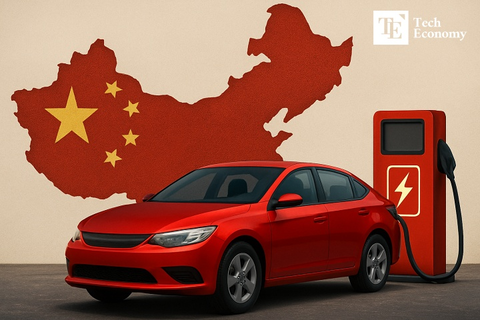China’s Massive 'Cash Offensive Strategy' Aims to Leap from AI Follower to Global Leader
Input
Modified
State-Led AI Ecosystem in China Declares Determination for Technological Self-Reliance Amid U.S. Sanctions Accelerates Pursuit of U.S. in Emerging Sino-American AI Bipolar Order

As China’s local governments race to unveil AI development policies, Shanghai—the country’s economic capital—has launched a subsidy program worth $138 million to foster its AI industry, joining the global competition to build a world-class AI ecosystem. This move reflects not only the fierce inter-city rivalry within China but also the central government’s determination to achieve technological self-reliance amid intensifying U.S. sanctions. Under the overarching “AI+” policy directive, China is accelerating its efforts to claim global AI leadership by leveraging its vast domestic market, rich talent pool, and ability to absorb open-source-based technologies.
Shanghai Announces Comprehensive AI Subsidy Plan
On July 30, the South China Morning Post and Chinese media outlet The Paper reported that the Shanghai Municipal Commission of Economy and Informatization unveiled the “Measures to Expand AI Applications in Shanghai” on July 28. Timed with the World Artificial Intelligence Conference (WAIC) held from July 26 to 28, the new policy aims to establish a globally competitive AI ecosystem. As part of the initiative, Shanghai will issue $138 million in subsidy coupons to support local AI companies.
The package focuses on reducing operational costs for AI startups and making it easier for local firms to adopt AI solutions. Specifically, $80 million will go toward computing power subsidies, $48 million will be used to offer discounts for utilizing third-party AI models, and $10 million will support data collection and corpus acquisition for training new models. Additional incentives include grants of up to $43,000 per person to attract top AI talent, rent reductions or one-time startup subsidies for qualifying entrepreneurial teams located in designated AI towns.
The commission stated that this program would provide further subsidies for leasing, purchasing, or constructing computing infrastructure, AI models, and datasets. Subsidy rates will range from 10% to 100% of the contract amount. Pan Helin, a member of an expert committee under China’s Ministry of Industry and Information Technology, said the plan is designed to directly lower company costs and will likely deliver tangible results for the local AI industry.

China has treated AI as a core national strategy since 2015
Other Chinese cities—including Hangzhou, Shenzhen, Chengdu, and Beijing—are rolling out similar support measures. Hangzhou, in particular, has emerged as a key AI hub by fostering “Six Little Dragons,” a group of elite startups that includes DeepSeek, which stunned the world with its performance despite chip export controls. Last year, the Hangzhou government unveiled plans to allocate $34 million in computing power subsidies as part of its AI industry support program.
Central government backing is also a significant driver behind the rise of companies like DeepSeek. China first elevated AI to the level of national strategy in 2015. In May of that year, the concept of AI manufacturing appeared in “Made in China 2025,” a policy aimed at enhancing the quality of the country’s manufacturing sector. In July, AI was further identified as one of 11 strategic pillars under the “Internet Plus” initiative.
Subsequent years saw an acceleration of “Internet Plus” initiatives, culminating in the State Council’s release of the “New Generation Artificial Intelligence Development Plan” in 2017. The plan established AI as a national priority with a goal of achieving global leadership in AI theory, technology, and applications by 2030. A 2020 report by the Korea-China Science and Technology Cooperation Center divided China’s AI development policy into three stages: the era of intelligent manufacturing (2015–2016), the acceleration of “Internet Plus” (2016–2017), and the national strategic planning period (2017 onward).
Since last year, Chinese AI policy has entered a new phase. During the National People’s Congress, the concept of “AI+ Action” was introduced for the first time, representing a comprehensive state-level support initiative. Rather than applying AI to isolated sectors, the initiative promotes the integration of AI into various domains—including the economy, science, public services, healthcare, education, and social welfare—to spur broad-based development.
At the time, Yang Jie, Chairman of China Mobile and a member of the Chinese People’s Political Consultative Conference, stated that AI must shift from being a supportive tool for other industries (“+AI”) to becoming essential infrastructure that drives economic sophistication (“AI+”). In response, local governments sprang into action: Beijing focused on building up Zhongguancun—China’s Silicon Valley—while Shanghai and Guangdong prioritized talent cultivation and foundational infrastructure, respectively.
China Leads the World in AI Patent Filings
China’s vast domestic market and deep talent pool have significantly contributed to its AI advancement. The country’s highly competitive consumer market serves as a testing ground for AI technologies. As of 2024, the core AI industry in China is valued at approximately $83 billion. A tremendous number of STEM graduates fuels research and development; an estimated 77,000 Ph.D.-level STEM graduates are expected this year. Roughly 26% of the world’s top AI researchers are believed to be of Chinese origin.
The open-source ecosystem has also propelled China’s AI development. The public release of core AI research breakthroughs, such as Google’s “Transformer” architecture, has enabled latecomers to absorb these technologies rapidly. Chinese firms have capitalized on this trend to achieve fast-paced growth. Of the 3,755 AI models currently known worldwide, China accounts for 1,509—over 40%—most of which are built on open-source frameworks. Foreign Affairs magazine described this as a “calculated strategy” by China to counter U.S. AI technology controls and assert influence.
These efforts have yielded tangible outcomes: China is now the global leader in AI patent filings. The country filed 13,000 patents last year, far outpacing the United States, which filed around 8,600. The BBC recently noted that China’s massive investments in technologies—from EV batteries and solar power to AI—stem from President Xi Jinping’s ambition to transform China into a technological superpower. A report by the Information Technology and Innovation Foundation (ITIF), a U.S. think tank on economic and innovation policy, concluded that China’s aggressive state support has already allowed it to surpass the U.S. in AI R&D by volume. ITIF also warned that the U.S. may only maintain its leadership position for a few more years.





















